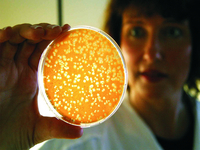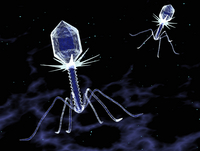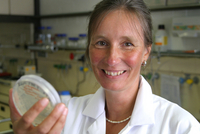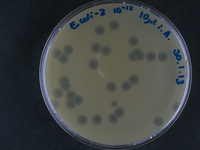Bacteriophages and phage therapy
Questions and Answers: An Overview
This DSMZ website will help to inform all those who are interested in phages and phage therapy.
Please note: The DSMZ does not provide phages to private persons and not for direct use in humans or animals.
What is the current legal situation for human phage application?

Currently, the problem in Europe is the missing regulatory framework for therapeutical use of phages that would explicitly mention and acknowledge the specific concept and unique mode of clinical use. More ...
How does the DSMZ contribute to phage therapy?

Within the DSMZ department of microorganisms, a phage collection was established more than 25 years ago. More ...
What are bacteriophages (phages) and how do they work?

Bacteriophages, short form: phages (Greek: phagein = eat/swallow) are viruses in the wider biological sense. They exclusively attack bacteria and lyse (video: phage induced bacteriolysis) them (“bacteria eaters”). More ...
What are multiresistant microorganisms and what means “hospital infections”?

In this context, bacteria are in focus of attention. They are unicellular organisms without a cell nucleus. About 90% of the bacteria that are known are harmless, important commensals or even essential for humans and animals (e.g., the gut flora). More ...
How can phages be applied in medicine?

Phages are useful where bacteria are unwanted. Already in 1917 when Felix d’Herelle discovered phages their potential application for medical therapy was imaginable and was soon dominating this early scientific approaches using phages; however, without being able to visualize the phages (a phage is only visible in an electron microscope). More ...
Are antibiotic treatment and phage therapy contradictory?

No. Both have the same aim, to kill unwanted bacteria, both can be applied together. This will always remain the decision by the physician. More ...
In case of which bacteria is phage therapy not possible?

Intracellular bacteria like Borrelia cannot be targeted by whole living phage particles as phages have to get in direct contact with the bacterial cell surface. More ...
Literature

For further research: Links, Articles and Books. More ...

